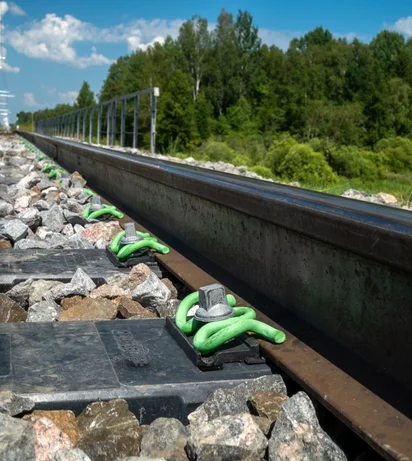Ballasted track is regarded as the most commonly used type of railway superstructure. It has been used in a similar basic design since the early days of the railway age and still dominates large parts of the rail network today. Its task is to absorb the vertical and horizontal forces generated when trains travel over the track and safely transfer these to the subgrade. This prevents individual components from being overloaded and, at the same time, ensures even surface pressure on the subgrade.
The ballast bed offers natural elasticity, which in turn protects the track components, ensures a smooth ride and dampens the dynamic forces generated during acceleration and deceleration or at high speeds.
Its versatility makes ballasted track the preferred construction method for main and branch lines, regional transport and even heavy haul corridors. It can be flexibly adapted to different requirements and offers another important advantage: corrections to the track position are comparatively easy.
In any case, despite its proven track record and ease of handling, ballasted tracks also has a major disadvantage. At high speeds or with increasing axle loads, the ballast stones shift in the track bed, which impairs the track position in the long term and imposes high maintenance costs.
This is precisely where modern fastening systems come in. They provide additional elasticity, reduce dynamic stresses and extend maintenance intervals. This ensures that the ballasted track remains efficient and economical, even under increasing demands.
Vossloh offers sophisticated systems for ballasted track that are optimally tailored to the respective areas of application. They combine safety with cost-effectiveness and ensure a sustainable infrastructure, even under increasing loads.

.jpg?format=webp&quality=85&crop=3733,2800,x234,y0&width=337)
.jpg?format=webp&quality=85&crop=4600,3450,x0,y399&width=337)
